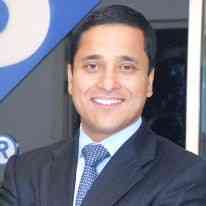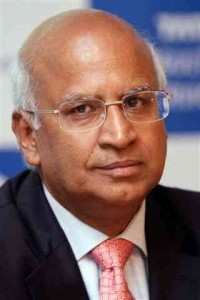Settling down for a cup of tea with a CIO friend of mine, the discussion veered about things in general and not so general. After touching topics like the elections in Maharashtra, water cuts in Mumbai, and Nobel for Prez Obama, the topic veered towards the various clubs et al. The clubbing bit was a trigger and my friend showed me an invitation that he (or another CIO friend of his) had received from reputed IT publishing group.
The proposed club had almost all the features like the other CIO clubs, but it went a bit ahead. Namely, there will be family outings, tuitions and career guidance for kids, cookery classes and kitty parties for wives, caretakers for old parents, etc. In addition, there will be all those ‘exclusive’ conferences invites, the offsite events, etc. etc. Yet one of the most distinguishing features of the proposed club was the annual fee, a whopping Rs. 1,00,000 per annum.
With a rather obtusely open mouth, I asked my friend what he thought of the initiative and the annual fee. He smiled at me obliquely and responded; “why pay when you can have all this and more for free”.
Indeed, over the years that I have spent in the IT industry, one observation that has been reaffirmed time over time that among all the other top executives within an organization, the Chief Information Officer or CIO stands tall and is treated differently both within and outside the organization. It has been a long journey was the Indian CIO, often starting as an EDP manager in the days of yore and then going on to head a function that was at best considered to be a support one. Today, the IT department is critical glue that not only connects the disparate functions within the company but now is also a strategic one than can help in curtailing costs and gaining market share. As the weight age of the IT function zoomed over the years, so has the stock value of the CIO.
And the CIO stock value only increases depending on the vertical space he is in, thus say for instance a CIO at TCS, Infosys and Wipro might be at par with the rest of the chiefs, like CFO, CPO (chief people officer), etc. In other domains like manufacturing, banking and telecom, where IT could be the deciding factor between success and disaster, the CIO is next only to the CEO. No major decisions in these companies are taken without the CIO’s solicitation. The CEO is constantly checking out with the CIO, “Is this possible”, “how can we do it better”, “help!!”.
The change in the CIO’s stature can be gauged by the cosy cabins that they now occupy, till a decade or so back, CIOs used to take up space beside the data enter in case they are needed in a jiffy. But now, their cabins are next to CEOs and rest, reflecting a shift from a technological role to that of a strategic one.
So that proves how the CIO’s role has evolved over the year. Let me now tell you why they are a pampered lot as well.
India is a country in a hurry at the moment. After years of socialist stagnation, we embraced the liberalism with the enthusiasm and fanaticsm of a new convert. Suddenly the economy shifted gears from neutral to 4, and growth became the new mantra. The change in the market also brought about a massive change in the mindset as well. Also, with economy opening up suddenly there were a glut of options.
Since, IT is all pervasive, right from the desktops, mobile to the data center, the CIO’s opinion on what to buy and how much to buy became the last word on it. The vendors realised it first and smartly and subtly started to cajole the CIOs, with Diwali hampers, New Year gifts, branded freebies, etc. Next, they started to organize conferences and round-tables at fancy locales abroad, taking the CIOs with them on an all paid luxurious trip.
It is not only the vendors who court the CIOs, but the media, especially the B2B one, became an ardent admirer. For the few publication houses that run the magazine in the space, the CIO community is the most important one, simply because depending on the same will the vendors agree to splurge on full page or false cover adverts. In the past year or so, for these B2B publications, as the print revenues shrunk substantially, events became an important source of income. And now the CIO was no more an important factor, but the most important factor, as the sponsors would only agree to pay if you could ensure the presence of a set number of enterprise CIOs for the event. Any faltering on the number and the client would refuse to cough up as well. Little wonder, in the past one year, there were more enterprise events (from business intelligence to storage) than the past 5 years. Not only the B2B magazines, but also reputed mainstream publications and business news channels started organizing such events to quickly shore up their top line.
The Indian CIOs too realised this shift as now they were being repeatedly called as panellists, delegates, etc. for scores of events. Take the case of my CIO friend having a tea; in the past week he had attended 4 conferences, 1 in Bangalore, 1 in Delhi and 2 in Mumbai, flying business class to all places. And this was a lean week, since he could not attend (or wished not too) some 5 other events he was called to. He is a star and he knows it.
Another symbol of the power is the amount of clubs that have mushroomed over the past few years, one of the most successful ones is the CIO Club in Mumbai, set up by the CIOs themselves. The club activities take place in swanky 5-star hotels sponsored by different vendors. Recently, Network 18 had officially joined hands with the club, to what end, I am still not sure. Then there is a Gartner Club for CIOs, rumoured to be quite heavy on the pockets and also IMA has a club for the CIOs as well. Indeed, every publication worth its salt tries to engage the CIOs through these clubs, forms, community exercise and the CIOs are quite aware of this. There have been times when senior CIOs have refused to attend an event if they are called merely as a panellist and not as a speaker. On the other hand, there are a few CIOs who can be seen at all the events and even the vendors are not keen to court them.
Thus because of the power than the Indian CIOs wield, they are much respected, loved, feared and also pampered by alln sundry. Even, my CIO friend, when I shared with him these views appeared to agree. Finally, I posed him the Rs. 1,00,000 question; Would you be joining the club?
“Of course not,” he quipped, “my CEO will never agree to pay and I would not want to pay. If I did pay, would it not be better to pay for gymkhana membership that will help me get in shape. Rather than a publication that promises to provide me special pases for events; where I would be invited anyways,” he stated. Like many else Indian CIOs, he did seem to know his value and surely he won’t settle for anything less.
Settling down for a cup of tea with a CIO friend of mine, the discussion veered about things in general and not so general. After glossing over issues like the elections in Maharashtra, water cuts in Mumbai, and Nobel for Prez Obama, the topic veered towards the various clubs et al. The clubbing bit was a trigger and my friend showed me an invitation that he (or another CIO friend of his) had received from reputed IT publishing group. The company was establishing a CIO club, and was soliciting advice on it.
The proposed club had almost all the features like the other CIO clubs, but it went a bit ahead. Namely, there will be family outings, tuitions and career guidance for kids, cookery classes and kitty parties for wives, caretakers for old parents, etc. In addition, there will be all those ‘exclusive’ conferences invites, the offsite events, etc. etc. Yet one of the most distinguishing features of the proposed club was the annual fee, a whopping Rs. 1,00,000 per annum.
With a rather obtusely open mouth, I asked my friend what he thought of the initiative and the annual fee. He smiled at me obliquely and responded; “why pay when you can have all this and more for free”.
Indeed, over the years that I have spent in the IT industry, one observation that has been reaffirmed time over time that among all the other top executives within an organization, the Chief Information Officer or CIO stands tall and is treated differently both within and outside the organization. It has been a long journey for the Indian CIO, often starting as an EDP manager in the days of yore and then going on to head a function that was at best considered to be a support one. Today, the IT department is critical glue that not only connects the disparate functions within the company but now is also a strategic one than can help in curtailing costs and gaining market share. As the weight age of the IT function zoomed over the years, so has the stock value of the CIO. Continue reading …
considered to be a support one. Today, the IT department is critical glue that not only connects the disparate functions within the company but now is also a strategic one than can help in curtailing costs and gaining market share. As the weight age of the IT function zoomed over the years, so has the stock value of the CIO. Continue reading …
 heart beat. Going by my own gait and girth, I for once would have been a more likely candidate for such an event in comparison to Ranjan. But then Ranjan is not the exception when it comes to a life snuffed out in the prime, in my own personal sphere I have come across numerous instances like Dewang & Sunil Mehta from Nasscom, Vivek Dayal from Mphasis, etc.
heart beat. Going by my own gait and girth, I for once would have been a more likely candidate for such an event in comparison to Ranjan. But then Ranjan is not the exception when it comes to a life snuffed out in the prime, in my own personal sphere I have come across numerous instances like Dewang & Sunil Mehta from Nasscom, Vivek Dayal from Mphasis, etc. 
 considered to be a support one. Today, the IT department is critical glue that not only connects the disparate functions within the company but now is also a strategic one than can help in curtailing costs and gaining market share. As the weight age of the IT function zoomed over the years, so has the stock value of the CIO.
considered to be a support one. Today, the IT department is critical glue that not only connects the disparate functions within the company but now is also a strategic one than can help in curtailing costs and gaining market share. As the weight age of the IT function zoomed over the years, so has the stock value of the CIO. 